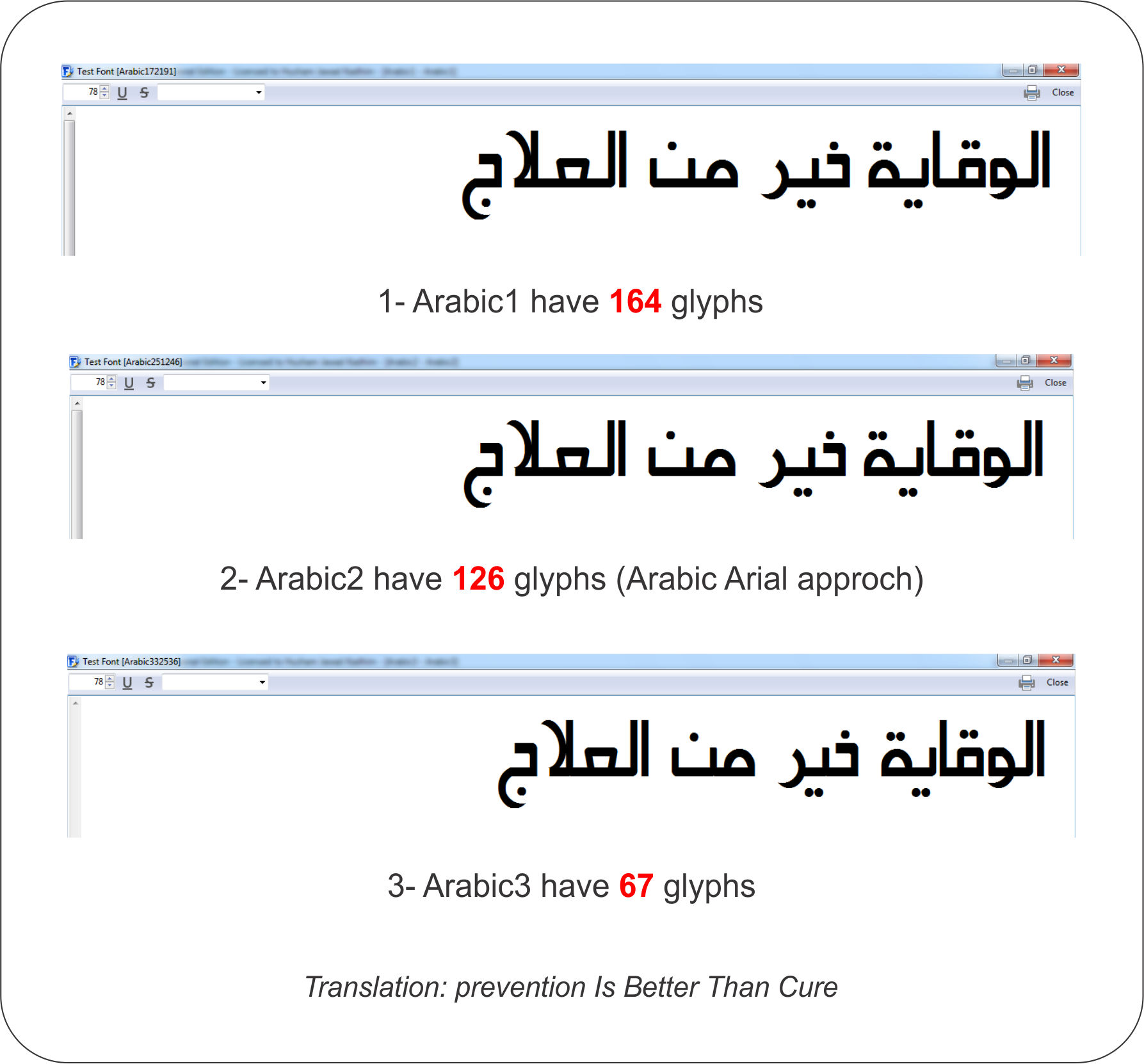Arabic Arial:
1- It is have 126 Arabic Glyphs (I mean Arabic language used in Arabic country region)
2- Isolated Glyphs merged with Arabic Basic Glyphs* (two code points)
3- Final Glyphs = Arabic Basic Glyphs … (Same Shapes Design)
Except:
alef-arab.fina, alefhamzaabove-arab.fina, alefmaddaabove-arab.fina, alefhamzabelow-arab.fina, tehmarbuta-arab.fina, hah-arab.fina, khah-arab.fina, jeem-arab.fina, ain-arab.fina, ghain-arab.fina, alefmaksura-arab.fina, yeh-arab.fina
4- Medial Glyphs = Initial Glyphs (Same Shapes Design)
Except:
ain-arab.medi, ghain.medi
feh-arab.init and qaf-arab.init (Difference Shapes Design)
5- Lillah Glyphs = allah-arab.isol
6- hamza-arab.isol = hamza-arab
I will apply Arabic Arial techniques (and what is beyond)
the standard will be the Numbers of Glyphs we will see three fonts:
1- Arabic1 have 164 glyphs
2- Arabic2 have 126 glyphs (Arabic Arial approach)
3- Arabic3 have 67 glyphs

The Outcomes of test three font above are the same! as shown in the picture.
The question is which approach is better (Arabic1, Arabic2, or Arabic3)?
- see attached files please
Arabic3.ttf (18.8 KB)
Arabic3.fcp (21 KB)
Arabic2.ttf (29.5 KB)
Arabic2.fcp (31.3 KB)
Arabic1.ttf (36.1 KB)
Arabic1.fcp (37.8 KB)
Arial Case Study.pdf (1.83 MB)
Basic glyphs.txt (425 Bytes)